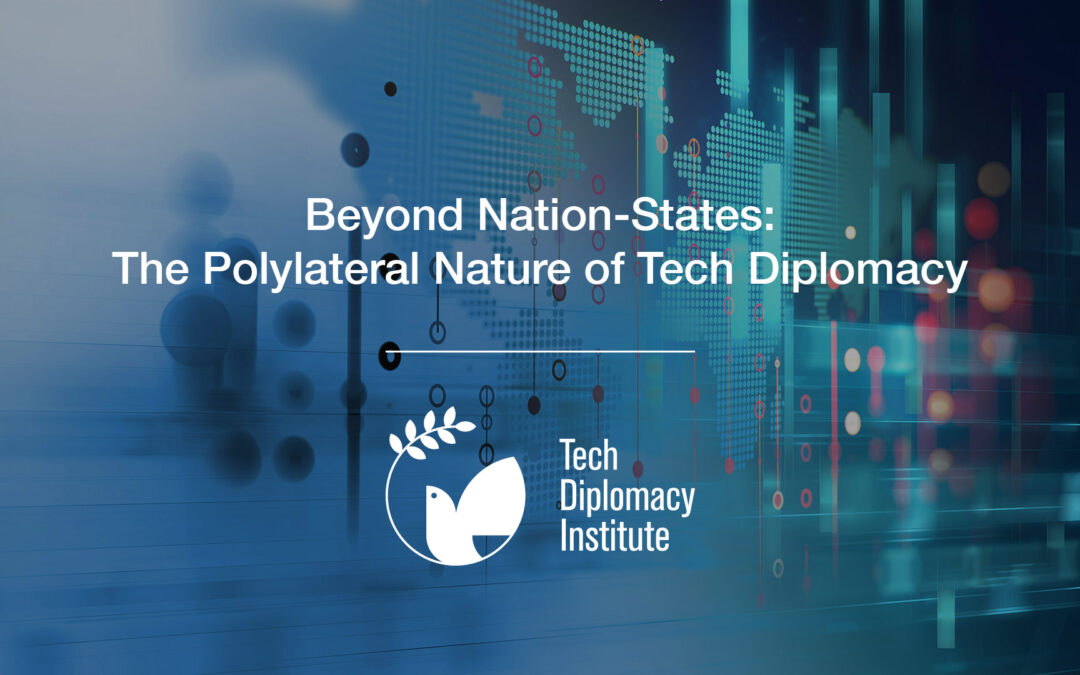Tech diplomacy shatters the centuries-old monopoly of nation-states over international relations. Unlike traditional diplomacy’s bilateral handshakes and multilateral treaties, tech diplomacy operates in a “polylateral” world—multiple types of actors wielding power through channels that bypass foreign ministries entirely.
When Meta decides content policy for 3 billion users or Google shapes information access across continents, they’re exercising influence that rivals sovereign governments. This isn’t just multilateral diplomacy with more participants; it’s a fundamental reimagining of who gets a seat at the table where humanity’s digital future is negotiated.
Technology Companies as Quasi-Sovereign Actors
No entity in history—not even the East India Company—has matched the combined economic, social, and political power of today’s tech giants. Google, Meta, Microsoft, Apple, and Amazon control infrastructure used by billions, command resources exceeding many nations’ GDP, and make decisions that fundamentally reshape society.
These companies exercise sovereign-like powers daily. They write rules for billions through terms of service. They adjudicate disputes via content moderation. They enforce decisions through account suspensions and platform bans. Their surveillance capabilities and algorithmic reach exceed most governments’ wildest ambitions.
Consider Meta’s Oversight Board—a private company creating its own supreme court. Or Apple’s App Store policies determining which software reaches a billion devices. These aren’t business decisions; they’re governance choices affecting democracy, commerce, and human rights globally.
This creates a diplomatic paradox. Governments need these companies as partners—their capabilities are essential for addressing everything from pandemic response to climate action. Yet these same companies operate without electoral accountability or constitutional constraints. Tech diplomacy must thread this needle: engaging corporate power while preserving democratic governance.
Civil Society Organizations and Digital Rights Advocacy
Civil society serves as tech diplomacy’s conscience. Organizations like the Electronic Frontier Foundation, Access Now, and Article 19 ensure that amid government negotiations and corporate lobbying, someone speaks for the users.
These groups bring irreplaceable assets to the table. They possess deep expertise in privacy, free expression, and digital rights that often surpasses governmental knowledge. They mobilize public opinion through advocacy campaigns. They provide independent analysis untainted by profit motives or political calculations.
Yet civil society faces structural disadvantages. A Google lobbyist flies business class to every relevant meeting; digital rights advocates scramble for funding to attend one annual conference. Silicon Valley nonprofits dominate English-language forums while Global South voices struggle for visibility. Small organizations can’t match corporate legal teams analyzing thousand-page regulatory proposals.
Effective tech diplomacy must actively counter these imbalances. This means funding civil society participation, translating documents into multiple languages, and ensuring that a farmer’s cooperative in Kenya has as much input on agricultural AI as John Deere’s executives.
Academic Institutions and Technical Expert Communities
Universities and research centers provide tech diplomacy’s intellectual backbone. Their researchers decode AI’s black boxes, model quantum computing’s implications, and track surveillance technology proliferation. Without this expertise, diplomats would negotiate blindfolded.
Technical standards bodies wield surprising diplomatic influence. The Internet Engineering Task Force’s protocols shape global communications. IEEE standards determine which technologies dominate markets. ISO certifications become trade barriers or enablers. These seemingly apolitical technical decisions carry enormous geopolitical weight.
Consider 5G standards development. What began as engineering discussions about radio frequencies became a US-China battleground with trillion-dollar stakes. Technical experts found themselves unwitting diplomats, their equations and specifications determining global power balances.
International Organizations and Multilateral Forums
The UN’s Internet Governance Forum pioneered multistakeholder tech diplomacy in 2006. Without binding authority, it nonetheless shapes global norms through convening power alone. Its annual meetings bring together ministers and hackers, CEOs and activists, creating unlikely alliances and unexpected solutions.
Regional bodies adapt these models to local contexts. The EU’s digital sovereignty push, the African Union’s Digital Transformation Strategy, and ASEAN’s digital economy frameworks each reflect different visions of technology governance. These aren’t competing approaches—they’re complementary experiments in managing technological change.
The World Economic Forum’s tech initiatives demonstrate how non-governmental platforms can drive diplomatic progress. Its Centre for the Fourth Industrial Revolution doesn’t sign treaties, but its frameworks influence national legislation worldwide. Power flows through influence networks, not just official channels.
Coordination Challenges and Power Dynamics
Polylateral diplomacy resembles herding cats—if some cats were lions with billion-dollar budgets. Technology companies operate on quarterly earnings cycles while diplomats think in electoral terms and civil society pursues generational change. These mismatched timelines create perpetual friction.
Power imbalances distort every discussion. Amazon’s annual revenue exceeds most countries’ GDP. Well-funded Western NGOs drown out grassroots Global South movements. Technical standards committees speak languages that exclude non-engineers. Without conscious effort to level playing fields, polylateral processes amplify existing inequalities.
The challenge isn’t just including diverse voices—it’s ensuring they’re heard. A startup founder, a privacy advocate, and a government minister might sit at the same table, but their ability to shape outcomes varies wildly.
Examples of Successful Polylateral Initiatives
Success stories prove polylateral tech diplomacy can work. The Christchurch Call brought governments and platforms together after the 2019 terrorist attacks, creating voluntary commitments that achieved what regulation couldn’t. Speed mattered more than perfection; collaboration trumped control.
The Global Partnership on AI unites 29 countries with industry and civil society around responsible AI development. It lacks enforcement power but builds consensus that shapes national policies. Its working groups on data governance and AI ethics create soft law that hardens into regulation.
The Paris Call for Trust and Security in Cyberspace garnered support from 80 countries, 700 companies, and 400 civil society groups. This coalition of the willing demonstrates how voluntary frameworks can achieve broader participation than binding treaties.
Conclusion
Polylateral tech diplomacy isn’t a choice—it’s reality. Technology’s influence flows through networks that ignore borders and bypass capitals. Governments can no longer govern technology alone, if they ever could.
This new diplomacy demands new skills. Negotiators must speak code and law, profit and principle. They must build trust between entities with fundamentally different DNA—startups and bureaucracies, activists and executives, professors and politicians.
The stakes couldn’t be higher. Polylateral tech diplomacy will determine whether AI serves humanity or surveils it, whether digital networks connect or divide us, whether innovation empowers or enslaves. The table has expanded beyond nation-states. The question now is whether we can make this cacophony of voices sing in harmony.
Success requires embracing complexity rather than lamenting it. The polylateral nature of tech diplomacy reflects technology’s own character—distributed, networked, and irreducibly complex. Our governance must match our technology, or our technology will govern us.
References
Bjola, C. (2024). Digital diplomacy and multistakeholder engagement: New models for international cooperation. Global Governance, 30(3), 312-329.
Garcia, E. V. (2024). A global south view of tech diplomacy. International Affairs Review, 12(3), 45-68.
Kaltofen, C., & Acuto, M. (2025). Studying tech diplomacy: An analytical framework. Global Policy, 16(1), 23-39.
United Nations. (2019). The age of digital interdependence: Report of the UN Secretary-General’s High-Level Panel on Digital Cooperation. United Nations.
World Economic Forum. (2023). Multistakeholder governance in the digital age. World Economic Forum Strategic Intelligence.

